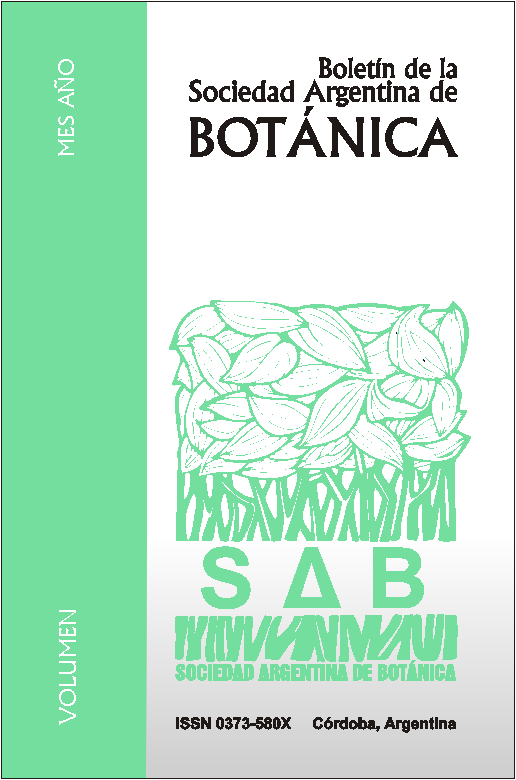The objective of the research was to perform a macroscopic anatomical study of the woods of six species of the genus Eucalyptus and to contribute to their identification at the field level. Eucalyptus acmenoides, E. bosistoana, E. deanei, E. longifolia, E. muelleriana e E. racemosa wood, not yet described anatomically, were analyzed. For this study, the basic specific mass was estimated and the samples were sanded and scarified with a scalpel, analyzed with a magnifying glass (10x magnification) and macroscopically described according to the norms of procedures in studies of wood anatomy, proposed by Coradin. The results showed similarities among the species regarding color, texture, grain, odor and grouping of the pores. The anatomical characters related to the pore distribution and the axial parenchyma are fundamental for macroscopic differentiation and recognition of these species.
DOI:
https://doi.org/10.31055/1851.2372.v53.n4.21981Keywords:
Basic density, eucalypt, macroscopic features, wood identification.Abstract
The objective of the research was to perform a macroscopic anatomical study of the woods of six species of the genus Eucalyptus and to contribute to their identification at the field level. Eucalyptus acmenoides, E. bosistoana, E. deanei, E. longifolia, E. muelleriana e E. racemosa wood, not yet described anatomically, were analyzed. For this study, the basic specific mass was estimated and the samples were sanded and scarified with a scalpel, analyzed with a magnifying glass (10x magnification) and macroscopically described according to the norms of procedures in studies of wood anatomy, proposed by Coradin. The results showed similarities among the species regarding color, texture, grain, odor and grouping of the pores. The anatomical characters related to the pore distribution and the axial parenchyma are fundamental for macroscopic differentiation and recognition of these species.Downloads
Published
Issue
Section
License
Provides immediate and free OPEN ACCESS to its content under the principle of making research freely available to the public, which fosters a greater exchange of global knowledge, allowing authors to maintain their copyright without restrictions.
Material published in Bol. Soc. Argent. Bot. is distributed under a Creative Commons Attribution-NonCommercial-ShareAlike 4.0 International license.





